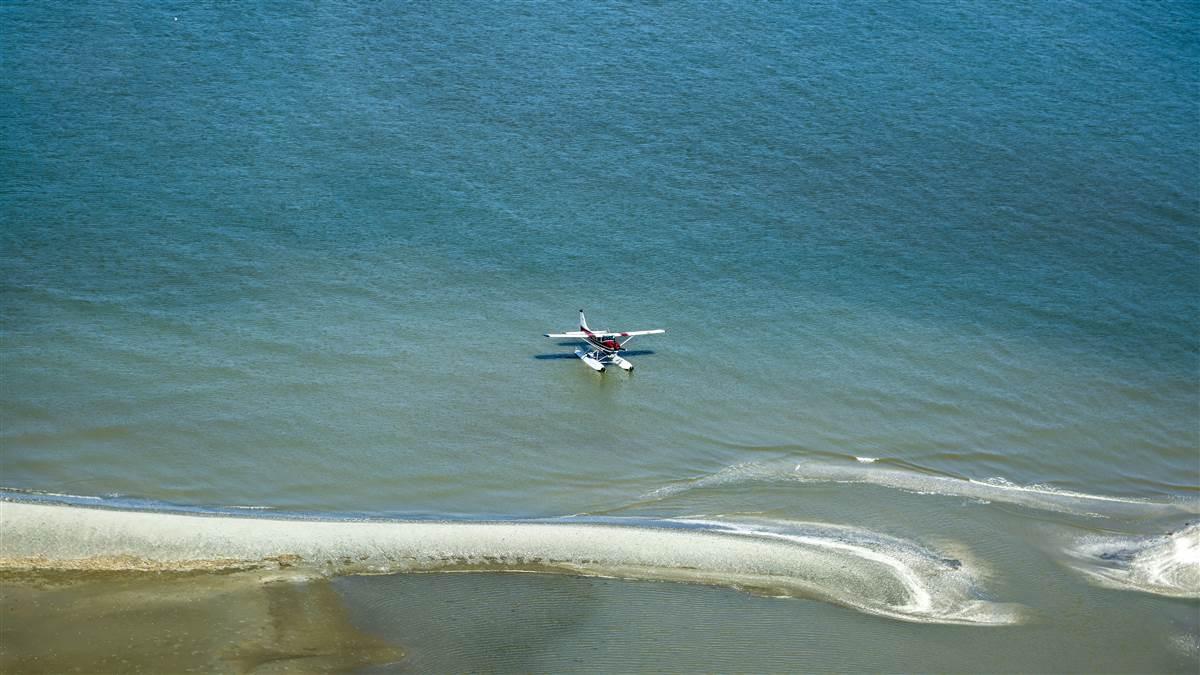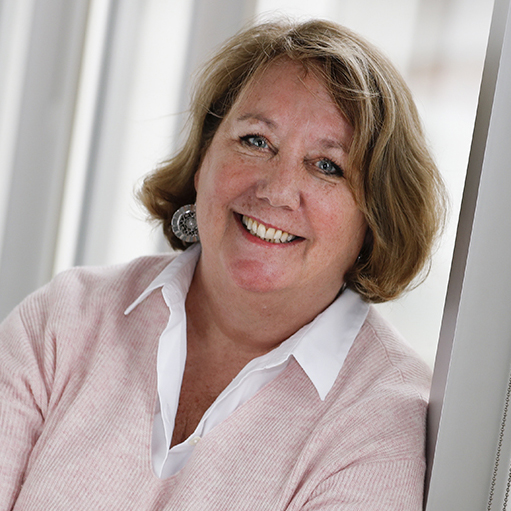Fisherman's paradise
Seaplane flying in southern Louisiana’s barrier islands

Emile “Buddy” Charvet was born into the best family for a boy who only wants to talk about fish—a seaplane operation that has been the largest and most influential on the Gulf Coast since 1954.
Of the several ventures that make up the business of Southern Seaplane, it is the fishing expeditions to the bayou, coastal marshes, swamps, and barrier islands that attract clientele to this Deep South family-run company throughout the year—and that keep Buddy happy with catch that includes redfish, speckled trout, and largemouth bass. Groups charter the seaplanes to fly out into the Gulf of Mexico to the wet wilderness of the Chandeleur Islands, a chain of barrier islands in the Breton National Wildlife Refuge 50 miles off the easternmost coast of Louisiana. For up to five hours, the group will wade-fish in the water—there is no dock—knee to waist deep and bring home 25 to 30 fish each, depending on the species. At the seaplane base Buddy’s dad, Emile Sr., will quickly clean the fish and pack them in ice to take home or, in a recent case, to a local New Orleans restaurant to be prepared by the chef for a family-style meal.
The sound one of those massive creatures makes when you interrupt its sleep is not for the faint of heart.“That’s the first time I’ve taken an airplane to go fishing,” laughed Matthew Smith of Richmond, Virginia, as he hosed off the sand from his feet and put lotion on his sunburned neck. “The trip was so much fun; and being able to see the bayous, islands, and the gulf from the air made it extra special. There was no down time: in the air for 25 minutes or so, landing, and right into fishing. I’m certainly going to remember this for the rest of my life. And we’ll be eating good tonight.”
Southern seaplane, inc.








The business
The entrepreneurial spirit is alive and well in the Panepinto family. The business that Phil Panepinto started as a charter operation for transporting salespeople and workers to the then-active marsh-based oil rigs on the Gulf of Mexico has expanded, contracted, and evolved in more than 60 years of change. Lyle is the oldest son; his younger brother Lance runs Panther Helicopters down the street from the seaplane operation; and middle brother Lane is an aviation mechanic. Lyle took over the business from his father in 2007, and his daughter Lacey will inherit the company. Because of economic changes and evolutionary realities, the Panepintos have restructured their business to keep pace—when helicopters became the vehicle of choice to head to the offshore oil rigs, Southern Seaplane started air tours. Throughout the week, tour companies bring dozens of tourists—many first-time fliers—across the 13,000-foot-long Crescent City Connection bridge over the Mississippi River from New Orleans to Belle Chasse to see the Big Easy from the air. Pilot/tour guides such as Nico Eymard will put passengers at ease, roar the Cessna 172s, 185s, or 206s down the waterway, and follow the Mississippi River into downtown New Orleans at just 1,000 feet agl, pointing out landmarks—the Superdome, the French Quarter, the St. Louis Cathedral. Continuing out into the bayou to the town of Jean Lafitte in Bayou Barataria, they regale the passengers with stories of the pirate Jean Lafitte and his exploits. They will land on the water, giving many of the passengers their first experience of a seaplane water landing. “I understand that this is a very unique experience for most people, and I really enjoy being a part of it,” says Eymard. Back at the base, Rhonda Panepinto, Lyle’s wife, takes care of the customers, helping them on and off the seaplanes, offering bottled water, and telling them the history of the area.
Southern Seaplane employs nine pilots both full-time and part-time. Emile Charvet came onboard after his marriage to Lacey as the manager of business operations, but he got his seaplane rating and now also flies pipeline and power line checks as another part of the business. Lacey started a seaplane safety course modeled after FlightSafety courses that she put in place right before the pandemic (see “Need to Escape” p. 84); it is back and running and growing since 2021. Since Southern Seaplane has trained its own pilots under Part 141, it employs safe rules of operation and techniques not typically taught to the average seaplane pilot in initial training, she says. The goal is to bring all seaplane pilots to the skill level of a charter seaplane pilot; the three-day course includes ground school, underwater egress training, and flight training.
Southern Seaplane also offers charter service and has a full-service maintenance facility. There are Cessna 206 amphibians, 172s, and 185s, as well as the newest member of the fleet, a Piper Aztec on floats called a Nomad. There are nine aircraft in the fleet.
Swamp tours
Always looking for new and creative ways to expand the business, Southern Seaplane took AOPA to test-fly its newest idea: tours of the bayou with reality TV stars Bruce “The Alligator Man” Mitchell and Ronnie Adams. We flew into appropriately named Happiness Bayou in the 185 and docked at Mitchell and Adams’s cabin near Violet, Louisiana. There we boarded Adams’s airboat for a tour through the swamp and out to the mouth of the Gulf of Mexico. I felt bad that I had never heard of these men before and had no excitement to pass under the thick tunnel of trees where Adams suggested snakes could be hanging out. He also promised to get us to see some alligators. Photographer Chris Rose was thrilled, videographer Josh Cochran a little less so, and I was petrified. Luckily both the massive Adams—six foot five and 260 pounds of muscle—and Mitchell, an equally impressive figure albeit a little hard to understand with his Louisiana drawl, were real gentlemen. Kind and humble, the two told fantastic stories of growing up in the swamp, hunting alligators, and cooking delicious native foods such as crawfish, frog legs, turtle, and nutria. Luckily, too, for me, there had been a cold snap and the snakes and gators stayed out of sight. Adams said he was disappointed, my baby (his signature phrase, I learned). He took us all the way out of the swamp and opened the motor on the boat as we passed through the massive 1.8 mile-long, $1.3 billion Lake Borgne Storm Surge Barrier. He kept an eye on both the gates and his phone to be sure the gates didn’t close on us, which almost worried me more than the snakes and gators. Southern Seaplane will offer these exclusive tours with Bruce and Ronnie for $300.
Tours








Everyone seemed determined to get me the chance to see an alligator. Like witnessing a terrible wreck—I really didn’t want to see it but looked anyway. So, we flew to Zam’s Swamp Tour and Ecological Park in the tiny town of Kraemer near Thibodaux, Louisiana, and landed in the bayou where former WWE wrestler Zamariah “ZZ” Loupe keeps alligators in his backyard. Sadly, Hurricane Ida devastated this little corner of the world, but while Loupe could not salvage the restaurant and gift shop, he did save his gators. The sound that one of those massive prehistoric beasts makes when you interrupt its sleep is not for the faint of heart. Loupe not only teased Samson, the big gator, and got him to open his mouth and roar, but he also plunged his arms into a green tub of swamp water and pulled up a giant snapping turtle. That’s a lot of nature in one day, my baby.
Family affair
The waterway at Southern Seaplane is 5,000 feet long, and there is a 3,200-foot hard surface runway alongside. There are several hangars, the maintenance facility, and the company offices. Lacey and Emile share an office (with a desk for Buddy where he watches fishing shows on a small television). Rhonda takes calls from the front desk or her office in the back, and Lyle’s office is a place he runs through to change his shirt in the humid Louisiana heat; at 68, he still flies more than most pilots in the company, usually taking the charter flights and fishing trips. Like Buddy, he too loves to fish. Two company managers, Eymard and another pilot (the company is currently looking to fill the position) switch off weekly, working full-time and on call seven days and then taking seven days off. Eymard has multiple ratings and thousands of hours. Most pilots who fly for Southern Seaplane return for part-time work during busy times. Forrest Campbell Jr. has flown with the Panepinto family since 1987 in various capacities, and he and Vince Panepinto flew us in Cessna 185s with straight floats to the bayou to meet Mitchell and Adams. Adams was Vince’s history teacher prior to his fame as a gator hunter on reality TV in The History Channel’s Swamp People series.
Lacey is her father’s shadow; she grew up trailing him around the seaplane base, playing golf with him (she was a New Orleans Junior Golf Association scholarship winner and won the New Orleans Ladies City Championship the year she graduated from college), and earning her pilot certificate at 23. Since having her two children (Buddy’s older sister, Emma, is much more interested in dance and makeup than fish), Lacey limits her flying to when she is truly needed, balancing motherhood and running a company.
“I love that we are family owned,” she says. “An aviation family business isn’t the easiest, and if I have a bad day my husband has a bad day, but it is an honor to continue my grandfather’s legacy. If my children decide to be a part of the business, I just hope they love it as much as we do.”



